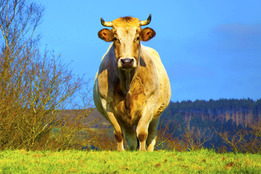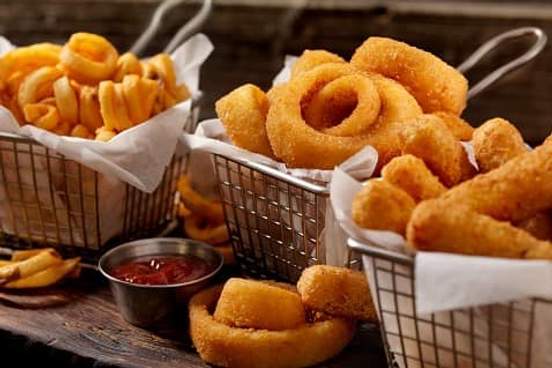
Appetizer
Definition : a food or drink that stimulates the appetite and is usually served before a meal
We'll start with the word itself. The use of appetizer for something that stimulates the appetite became an option on the English menu in the 18th century. It derives from Latin appetitus, the past participle of appetere, which means "to strive after" or "to long for."
Originally, appetite referred to any natural or instinctive desire (or longing) before it specified the desire to eat, as dished out in phrases like "a hearty/healthy appetite" or "a loss of appetite."

Hors d'oeuvre
Definition : any of various savory foods usually served as appetizers
Hors d'oeuvre is one of many borrowings from French cuisine. It translates literally to "outside of the work." An early French use is as the name for an outbuilding that is not part of an architect's main design. Such a structure would be "outside of the main work" of the original architecture. Hors d' œuvre (note the French ligature of "oe") also has some early use as an adverb with the meaning "out of the ordinary course of things." It's not hard to see then how these uses could have led to the application of the term to a part of a meal that is "outside" the main course—an appetizer.
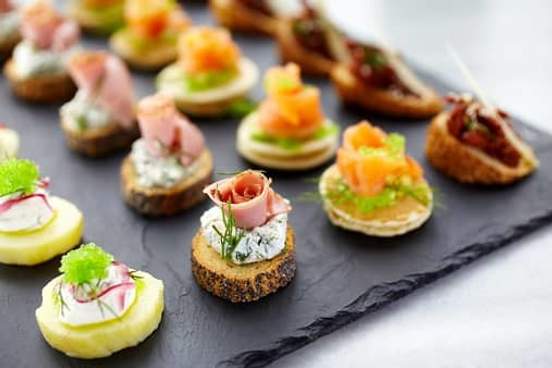
Canapé
Definition : an appetizer consisting of a piece of bread or toast or a cracker topped with a savory spread (such as caviar or cheese)
A mosquito was called kōnōps in ancient Greek, and a couch hung with curtains for protection against mosquitoes was a kōnōpion. This word for the piece of furniture was borrowed by the Romans as conopeum and eventually made its way into Middle English as canope and into French as canapé.
While the English attached the name to the covering curtain, and spelled it canopy, the French attached it to the couch it covered. At some point, the notion that a piece of bread or toast topped with some savory food resembled a couch or sofa became generally accepted, and the French canapé gained a new meaning. As with so many foods and words for food, English borrowed the appetizer and the name canapé from the French.
I like to go for a simple canapé of smoked salmon on thinly sliced, thickly buttered brown bread. Topped with freshly grated horseradish stirred through crème fraiche and drizzled with lemon juice, they'll go down a treat with your guests and you'll have more time to focus on preparing the main event.
— Cameron Emirali, quoted in Vanity Fair, 3 Dec. 2019
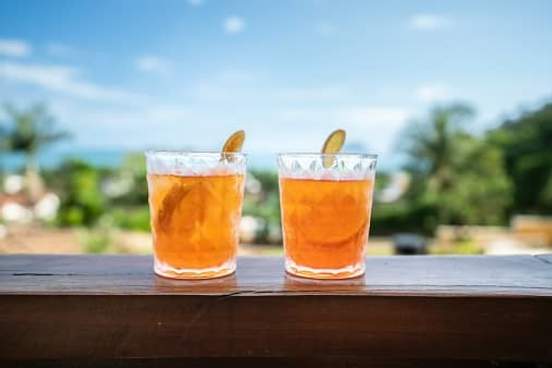
Aperitif
Definition : an alcoholic drink taken before a meal as an appetizer
Aperitif is from French apéritif, the adjective of which can mean "aperient (gently moving the bowels)" or "stimulating appetite." The French word goes back to Latin aperīre, "to open" or "to free from obstacles."
Although most apéritifs are dry, sweet versions are also popular. From bone dry drinks like gin and sparkling wines with zero dosage (no addition of sugar before corking), to syrupy dessert wines, the list includes dry sherry, vermouth, extra-dry and demi-sec sparklers, off-dry still wines, fruit-based cocktails and much more. The idea is to stimulate and entice the palate! For this reason, no food is needed alongside your apéritif, although small hors d’oeuvres or finger foods (nuts, cheese, crackers, olives, pâté) can be very welcome.
— Marcelle Carneiro, The Islander News, 22 Nov. 2021
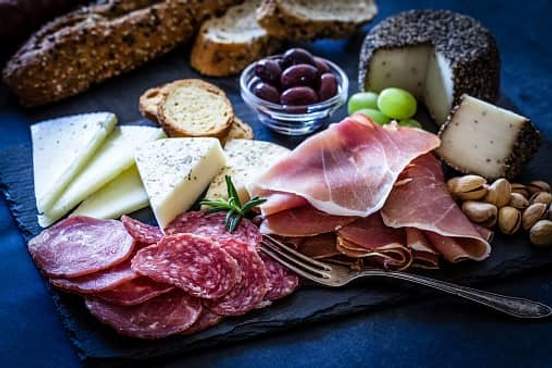
Antipasto
Definition : any of various typically Italian hors d'oeuvres; also : a plate of these served especially as the first course of a meal
Antipasto (plural antipasti) is a combination of the Italian prefix anti- (meaning "before") and pasto ("meal, food"). Pasto comes from Latin pāstus, a word for the pasturing of animals, and pāscere, "to feed."
An antipasto, or "food before a meal," typically includes a selection of Italian meats and cheeses as well as vegetables (such as peperoncini, olives, and artichokes).
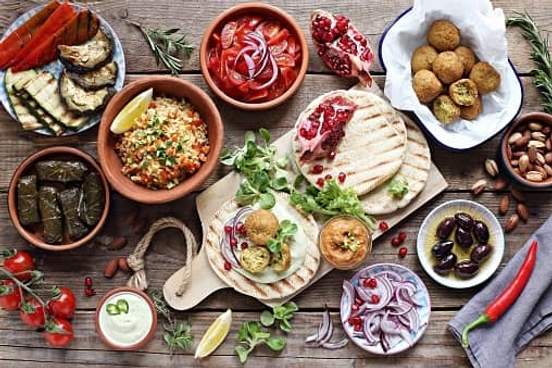
Meze
Definition : an appetizer in Greek or Middle Eastern cuisine often served with an aperitif
Meze is not just an appetizer but a platter of appetizers. Its name comes from Modern Greek mezes and Turkish meze, which go back to the Persian word for "taste" or "snack," maze. That said, a meze can be a meal in itself with its assortment of Greek spreads and dips, vegetables, and cheeses, along with olives, grape leaves, baba ghanoush, and pita bread.
I made a note to try … a multi-person meze platter…. The chef’s quick-pickled red cabbage and airy falafel … were both special…. Smoky, grilled sesame bread painted with garlic-heavy olive oil was delicious in its own right, but of course I dragged it through labneh, hummus, and baba ghanoush, too.
— Gabe Hiatt, Eater (Washington, D.C.), 15 Oct. 2021
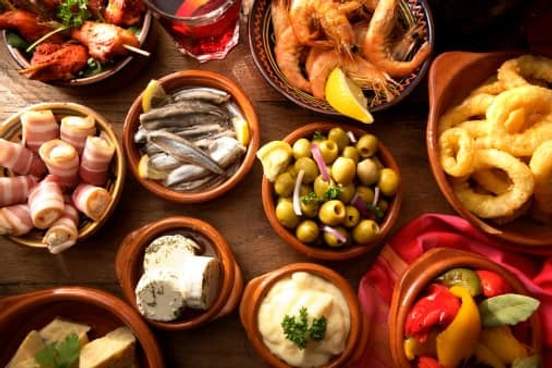
Tapa
Definition : an hors d'oeuvre served with drinks especially in Spanish bars
The word tapas is derived from the Spanish noun tapa, meaning "cover" or "lid." English speakers know tapas as a word for hors d'oeuvres served in a bar. How a word for a cover became a word for a food item is uncertain, but it likely occurred in a Spanish barroom. According to one account, Spanish barkeepers began covering their customers' drinks with slices of bread or meat to keep dust or insects from entering. Hence, the first edible tapa was a food lid. Other stories abound explaining how the custom of eating hors d'oeuvres called tapas with drinks emerged. But they are not satisfying.
Popular throughout Spain, tapas are festive and delicious appetizers and snacks. Traditional tapas include mixed olives, fried baby squid, meatballs and chorizo.
— Food & Wine, 13 Apr. 2021
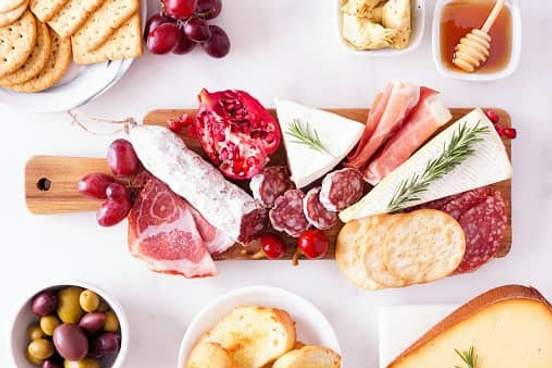
Charcuterie
Definition : a delicatessen specializing in dressed meats and meat dishes; also : the products sold in such a shop
In French charcuterie literally means "pork-butcher's shop," and in Middle French chaircutier is the name for a butcher. The words are cut from chair cuite, meaning "cooked meat." (In French chair means "meat" and cuite, "cooked.")
Charcuterie is often accompanied by cheese when served as an appetizer, so carnivores and turophiles can both enjoy.
An array of tapas will include a charcuterie of soppressata, capicola, milano salami and prosciutto and a cheese spread of comte, boucheron, parmesan reggiano and gouda.
— Michele Herrmann, Forbes, 9 Nov. 2021
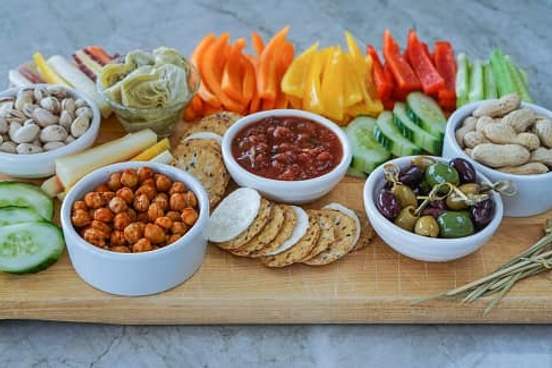
Crudités
Definition : pieces of raw vegetables (such as celery, carrot sticks, or cauliflower) served as an hors d'oeuvre often with a dip
Crudités are colorful pieces of raw, or barely cooked, vegetables of a variety of flavors and textures arranged together as an appetizer. Its name is the plural of French crudité, meaning "rawness" or "raw food." That word derives from Latin cruditas, meaning "indigestion," which, in turn, is related to crudus, "raw." We assure you that the last thing your guests will get indigestion from are raw vegetables.
These reimagined vegetable "platters" offer snap and restorative freshness, cooling and earthy-sweet, preparing diners for richer tastes to come. While some go by names like "forage board" and "garden charcuterie," most chefs just call them crudités.
— Ligaya Mishan, The New York Times, 8 Feb. 2018

Cocktail
Definition : an appetizer served as a first course at a meal
The "appetizer" meaning of cocktail is connected to the "drink" use. During the 19th century, cocktail began to be used for something resembling the drink as a mixture of diverse elements or ingredients—as small pieces of food with a sauce or seasoning. Familiar examples are "fruit cocktail" and "shrimp cocktail." Both of which can be served cold as an appetizer or light refreshment, and traditionally in a glass.
How cocktail came to be the name for an alcoholic drink that is a mixture of one or more liquors and flavoring ingredients is not known. The term seems to be American in derivation, and it may be a combination of cock, meaning "male fowl," and "tail." But why a mixed drink should be likened to a cock's tail is not clear, and a number of theorists have suggested alternative explanations (all of which are unverifiable). For instance, the drink has been associated with a racehorse with its tail docked. Such a horse typically was not a thoroughbred and was of mixed breed—much like a cocktail is mixed. Shall we order up another?
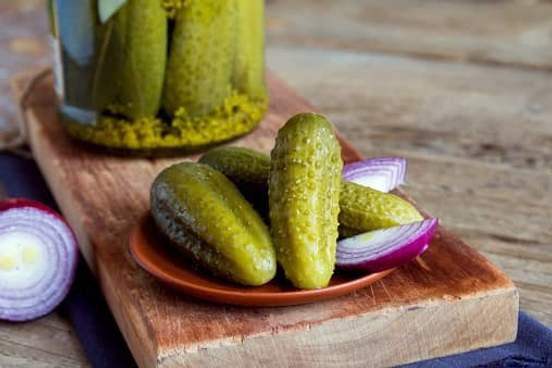
Relish
Definition : appetizer, hors d'oeuvre
Relish is an alteration of Middle English reles, meaning "taste." The word is occasionally encountered to indicate enjoyment in something that satisfies one's tastes—for example, "The hungry teenagers ate with great relish" or "The villain took relish in explaining his fiendish plan." However, relish is most familiar as a word for something adding a zestful flavor, like the food condiment made of chopped pickles. This flavorful sense of relish influenced its use for a savory appetizer.
A few hours before the turkey, the in-laws prepared and served a relish tray on a petite compartmentalized three-tiered silver platter. This was a pickle-heavy rendition with cherry peppers and olives. The standout was pickled watermelon rind, an absolute revelation that could only come from the minds of people who had enjoyed relish trays for decades.
— Nick Leggin, The Takeout, 12 Mar. 2020
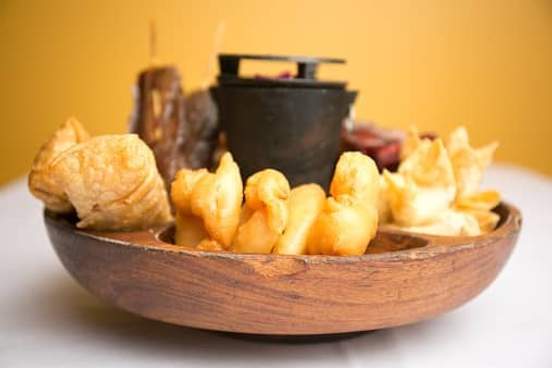
Pupu
Definition : an Asian dish served as an appetizer or main course and consisting of a variety of foods (such as egg rolls, spareribs, and fried shrimp)
Pupu is a borrowing of Hawaiian pūpū, meaning "appetizer." The "pupu platter" is a common offering on American Chinese and Hawaiian menus and usually consists of such items as egg rolls, spareribs, fried shrimp, and chicken. We recommend ordering this appetizer for two or more ... or as a meal for one.
The basic definition of poke literally means to "slice" or "cut crosswise into pieces." The fish used in poke was essentially the cut-offs from their catch to serve as a pupu (appetizer or snack), as opposed to the high-quality ahi (a popular choice) prevalent in most poke recipes today, according to [Zach Cummings].
— Jason Blasco, The Garden Island (Lihue, Hawaii), 16 Dec. 2020
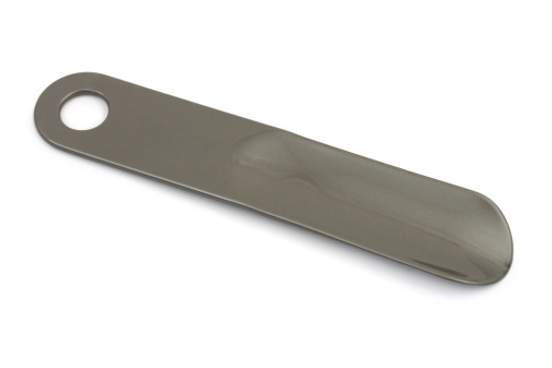
Shoeing-horn
Definition archaic : appetizer
A shoehorn is a curved piece of horn, wood, metal, or plastic that aids in slipping on a shoe. The device is also known as a shoeing-horn. In the 16th century (up to the 19th century) that variant name was applied to food or drink consumed as an appetizer by association with the function of the horn. That is, appetizers were seen as opening the passage for food like the horn facilitates the passage of the foot into the shoe.
He keeps a bustle in the world, drinks, slavers, and when he is a hungry offers up his devotions to a pickled Herring, which he will maintain by nineteen several arguments, to be the rarest dish in the world, and his chiefest argument is, because it is a shooing horn to draw down drink.
— Poor Robins Character of a Dutch-Man, 1672

Whet
Definition : appetizer; also : a drink of liquor
Whet goes back to Old English as a verb referring to sharpening or putting a sharp edge or point on an object. The noun form appears in the 17th century for things that literally sharpen, or that figuratively sharpen by inciting or stimulating. A whet of food or drink to stimulate the desire to eat is always appreciated, and not to be passed over.
The most famous dish of Wales is melted cheese on toast. Of course, you don't have to be Welsh to like melted cheese. In the 17th century the English themselves were serving "roast cheese" as an appetizer (a "whet").
— Charles Perry, The Los Angeles Times, 5 Apr. 2000
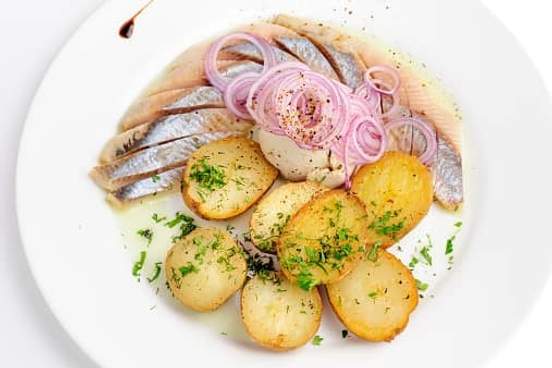
Zakuska
Definition : hors d'oeuvre
Zakuska (plural zakuski) is of Russian origin. The name comes from the verb zakusit', meaning "to have a snack." Za in the language means "for" and kusit' is from kus, the word for "morsel."
We would like more than a morsel of a zakuska. In fact, we'd like to sample all of the zakuski.
"These tomatoes are hands down the most popular zakuska (appetizer in Russian) I serve at my dinners," says Anna Voloshyna of her mother's recipe. "They are very different from the traditional pickled tomatoes because instead of a regular watery pickling liquid, they rest and mature in a thick spicy sauce made with fresh herbs, hot pepper, oil and vinegar."
— The San Francisco Chronicle, 13 Sept. 2020
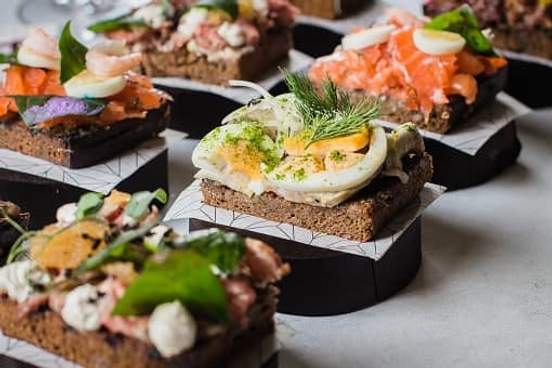
Smørrebrød
Definition : an hors d'oeuvre served in Danish style on a slice of buttered bread
Smørrebrød (or smorrebrod) comes from Danish in which smør means "butter" and brød, "bread." A smørrebrød is traditionally an open-faced, buttered sandwich that is topped with meat, cheese, or spreads and eaten before a meal.
Her first trip to Denmark the following year, however, led to the beginning of the pair's blended Christmas celebration. There, she learned about smørrebrød, which are open-face sandwiches typically eaten before Christmas dinner.
— Nashelly Chavez, The Press Democrat, 24 Nov. 2021
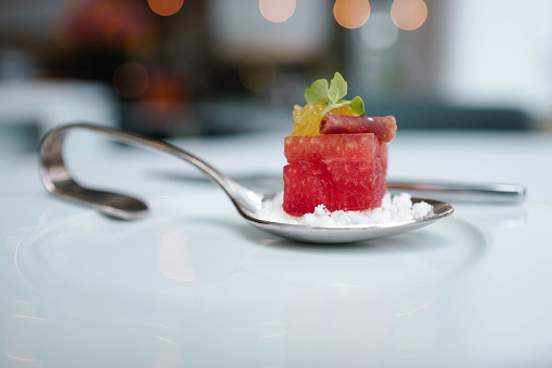
Amuse-bouche/Amuse-gueule
Definition : a small complimentary appetizer offered at some restaurants
In French, amuse bouche means literally "it amuses the mouth." English borrowed the word as a fancy name for an appetizer in the 1900s. But for not just any appetizer: an amuse-bouche is typically a tiny complimentary one that seems to have taxed the creative powers of the chef to the utmost for the amusement of the diners (e.g., a tiny beet-puree-filled taco; a tiny square of halibut-and-salmon cake; fig molasses on a tiny cube of goat cheese). The French are more likely to use their term amuse-gueule (gueule means "gullet") for those tasty tidbits. English also borrowed that word and its meaning.
If there's one item that sets the gastronomic restaurant apart from the average eatery, it would be the amuse-bouche. Also known as an "amuse," or "amuse-gueule," the amuse-bouche is a two-bite sampler meant to preview the chef's cooking style. This miniature bit of "mouth amusement" arrives gratis at the outset of the meal once menus are whisked away.
— Lesley Chesterman, The Gazette (Montreal, Canada), 11 Jan. 2003





